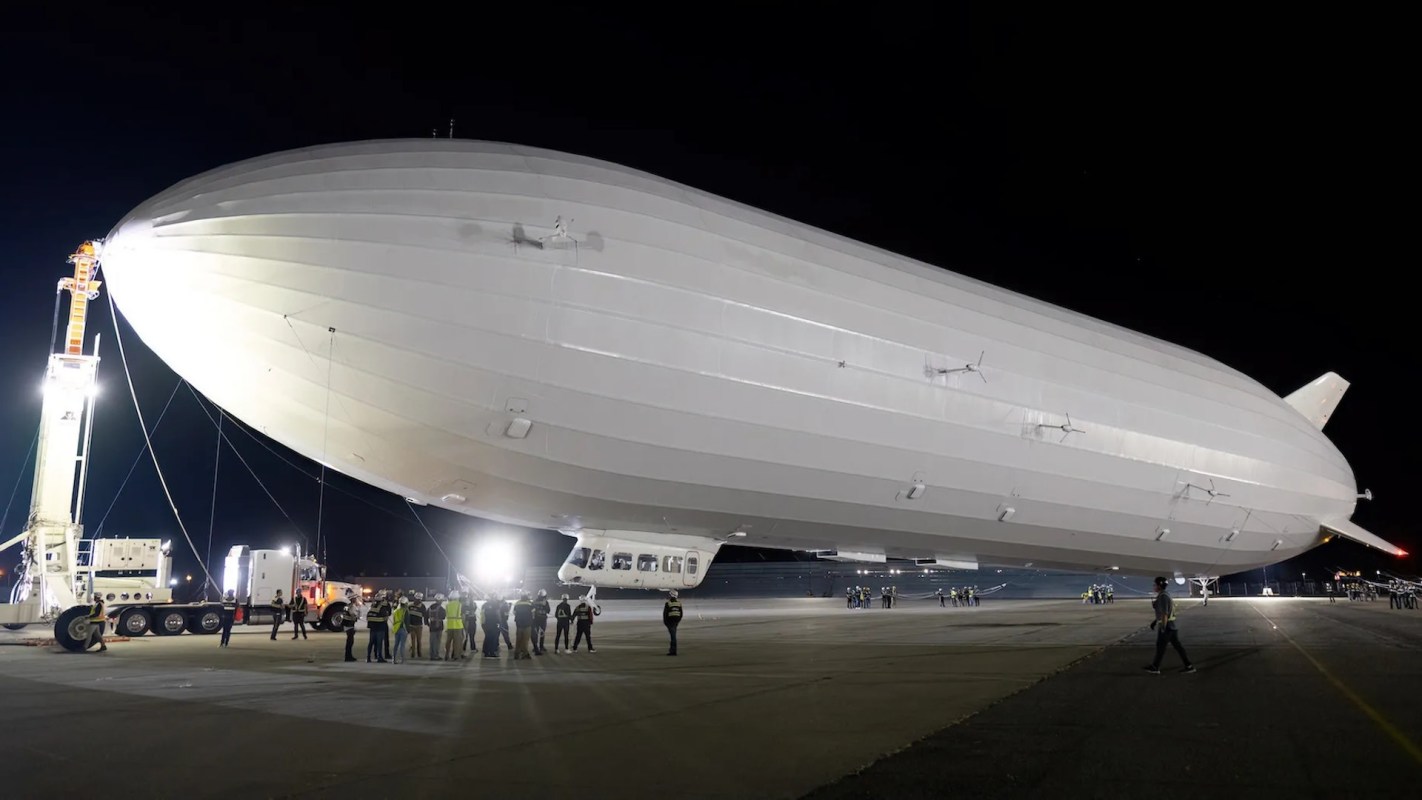A quick Google search for "Hindenburg" provides all you need to know about the unfortunate fate of the last great airship era. Imagery of the zeppelin disaster has permeated popular culture, often serving as a metaphor for unmitigated disasters.
But Google co-founder Sergey Brin is working to change the narrative surrounding the unique flying machines, with the goal of combatting planet-warming air pollution. He intends to put his Pathfinder-1 airship in the sky for test flights in California by September, before Federal Aviation Administration licenses for the project expire, according to a report from Big Think.
Brin feels that reviving airship tech can reduce the aviation sector's growing pollution burden, as well as aid "humanitarian efforts," per his startup, LTA (Lighter Than Air) Research.
Unlike the ill-fated Hindenburg before it, Pathfinder will use nonflammable helium to provide lift instead of combustible hydrogen. In 1937, the 800-foot-long, German-made airship caught fire, killing 36 people as it was destroyed while landing in New Jersey.
For Brin's airship, electric motors are planned to provide the propulsion to carry tons of cargo loads over hundreds of miles.
"It's been 10 years of blood, sweat, and tears," LTA CEO Alan Weston said in a story on the news by TechCrunch. "Now we must show that this can reliably fly in real-world conditions. And we're going to do that."
Pathfinder is 400 feet long with a carbon-fiber skeleton and a light synthetic covering. The massive blimp-like contraption emerged from the hangar in November for the first time. While the tech has been upgraded, the overall outside appearance still resembles its early 20th-century predecessors.
"The innovations and the technologies that we're about to demonstrate have the potential to lay the foundation for a new industry," Weston told TechCrunch.
The aviation sector generates about 2% of global air pollution. The International Energy Agency reports that the sector's exhaust output has grown faster "in recent decades" than shipping, rail, and road transportation.
🗣️ Which factor would most effectively motivate you to recycle your old batteries?
🔘 Getting money back 💰
🔘 Decluttering my junk drawer ✨
🔘 Helping the planet 🌎
🔘 I don't recycle batteries ❌
🗳️ Click your choice to see results and speak your mind
Surprisingly, inventions from the (even ancient) past are helping us to transform our energy system with sustainable sources. Ships are using new versions of sails. Borrowing from Archimedes, mirrors in China are helping to catch energy from the sun.
Now, Pathfinder is about to be put through its paces. TechCrunch reported that the hauler, larger than a Goodyear blimp, can travel at 75 miles per hour.
If the airship can successfully carry cargo more cleanly, it would be a big benefit for public health. That's because eye irritation, breathing problems, and even lung cancer are among concerns caused by troublesome particulates that are often found in fossil-fouled air, per the CDC.
The Pathfinder's creators hope to be part of the solution.
"What excites me about what we've done so far is that we've shown to ourselves, and we hope to show to the rest of the world, that we can scale in size and productivity," Weston told TechCrunch. "And I believe in our potential to scale up again in the future."
Join our free newsletter for weekly updates on the coolest innovations improving our lives and saving our planet.









